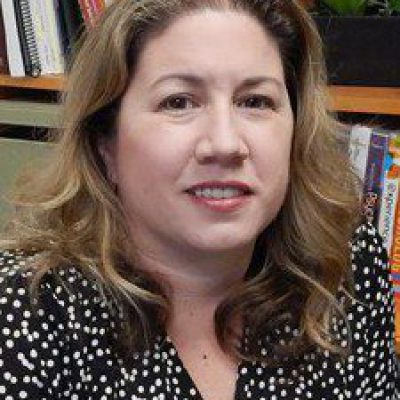Interview with Professor Bizon
Professor Bizon Interview
By: Natalie Martinez
3/20/18
NM: Hi, Dr. Bizon. So happy to have you here today. We’ll go ahead and get started. When
did you start working with the Center and what role do you serve here?
JB: I started working with the Center in 2010. When I came here, I was recruited here from
another University. I was fortunate enough that Dr. Ache had seen my job talk and
thought that I would have some overlap and interest with the Center. He invited me
down, even before I started my job here, to attend one of the Center’s annual meetings
and I got to meet a lot of people there. So, really, when I started at UF I got to start
participating with the Center.
NM: What exactly sparked your passion for neuroscience, specifically the aging process?
JM: That is a tough question. I would say I became really interested in neuroplasticity and
learning in memory function. I became interested in neuroscience through my
psychology classes in college. I was completely fascinated by the idea that the brain was
so adaptive and could change and be plastic. I think learning in memory is potentially the
best example of that kind of process and that we can learn something and remember it
over the whole life span. We can remember what we did when we were eight years old
at a particular event or what we did for our birthday. That’s just a remarkably interesting
process to me.
NM: So, you’re a professor here at the University right now. Whenever you were in college
did you always know you wanted to be a professor or is that something you realized later on?
JB: No, not at all. (Laughs) Honestly, when I went to college I didn’t know that my college
professors did research. So, it wasn’t until I became interested in some of the research
that I was hearing about that the professors were teaching that I started talking to them
about who does these kinds of studies and I realized, wait, those are the people that are
teaching me. So, really, my academic advisor suggested that I get involved in research
in college, so that’s when I started doing research in a laboratory and really got turned
onto this as a profession.
NM: Can you walk me through what you are working on currently in your research?
JB: Sure, so most of our research does investigate cognitive functions, both learning and
memory, as well as executive function, in the context of aging. So, I’m very interested in
how these processes change across the life span. I think of aging as a window to really
examine how different cognitive processes both operate and also, ultimately are
vulnerable. I think aging is a really unique facet to look at for that reason because it can
give you a lot of information about normal function as well as dysfunction.
Our research uses animal models, specifically rats, to investigate these different aspects
of cognitive function and the molecular and circuit mechanisms that govern both normal
behavior and also changes to these different aspects of cognation across the lifespan.
That involves learning in memory, executive functions like attentional set-shifting, so our
ability to modify our behavior when a particular strategy is no longer working and also
things like cost-benefit decision making, or the ability to weigh benefits and potential
pitfalls and really make effective decisions. And we can do all of that in rodent models
and relate different changes in the brain with aging to performance on a variety of cognitive tasks.
NM: What would you say the next steps in your research are or what’s to come?
JB: I should probably mention that we got into looking at olfactory function because there is
a very strong relationship between olfactory function and memory. We were actually
trying to do something completely different in our rat behavior and one of the very first
things we had to do in this cognitive task was to have the rats discriminate between two
odors. We found that half of our aged rats couldn’t do a simple odor discrimination and
they happened to be the same half of the rats, same sub-population of aged rats, that
couldn’t do a memory task. So, that was sort of our serendipitous finding that led us
down the road of doing olfactory work. We’ve started to look at that much more
sensitively now as we came to UF and hooked up with people and started to collaborate
with people here who were real experts in olfactory function and we’ve begun now to see
where the aged rats deficits are. We think that it is, and this is work that we do with Sara
Burke here who is investigating visual discrimination, related to dysfunction in a
particular part of the brain that is vulnerable in both aging and Alzheimer’s disease. Our
current work is now actually trying to model some of the Alzheimer’s type of pathology in
that brain region and see if these olfactory tasks can actually be sensitive behavioral
biomarkers of this type of neuropathology.
NM: What would you say is one of the biggest challenges you’ve faced while conducting this research?
JB: I think one of the challenges of the type of research that we do, and I think that this sort
of speaks to the olfactory function a little bit, is that while there is tremendous homology
across these brain systems, rodents and non-human primates and people, rats are not
people. Rats are not primates. So for translational research, it’s challenging to find the
right place and landscape. That’s where olfaction has really been helpful. There are also
aspects of what we’re looking at that would be very represented in the visual system in
humans that are better developed. So, I think finding where to be in that translational
space that both takes advantage of the species that you’re studying, but also allows you
to have translational ties to human function, I think is important and sometimes difficult.
NM: What would you say your favorite part is about the research?
JB: I love science. I think it’s fun to do science. It’s fun to ask questions that are new.
Discovery, it’s exciting. I really love talking to other researchers who have different
perspectives, different types of expertise. One thing that’s just really remarkable about
the Center is the number of diverse scientists that they actually have attracted and the
depth of knowledge that many of these individuals have in a wide-range of fields. Rating
from how to make a tastier vegetable, to doing line in memory functions, to pesticide
research. It’s really a unique, I think, space that the Center actually has on campus and it’s fun.
NM: Thank you so much for your time.



